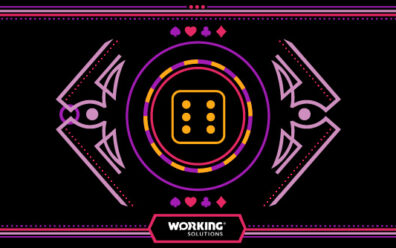Customer Experience7 Minute Read
Finding the Right Customer Service Model to Improve Customer Satisfaction
Today more than ever before, delivering exceptional customer experience (CX) can set your brand apart. Achieving this level of service requires selecting the customer care model that aligns best with your business objectives. Each model, whether it’s in-house, outsourced, hybrid, or digital-first, has its distinct advantages and challenges. Here are the different types of contact center models:

Model #1: In-House Staff
This classic approach involves building and managing an in-house customer service team, granting you full control over service quality, messaging, and customer experience design.
Benefits:
- Full control over agents and service quality.
- Customizable hours, messages, and experience.
Drawbacks:
- Hiring and training responsibilities.
- Infrastructural expenses and cybersecurity risks.
Is this model suitable for your business? Before deciding to implement an in-house customer experience (CX) strategy, it’s crucial to evaluate whether your organization has access to the necessary expertise to maximize the potential of each customer interaction. This involves not only having the right skill set on your team but also being prepared to make significant investments in personnel, technology, and infrastructure. These investments are essential to deliver a level of service that meets the high standards of today’s consumers, ensuring that every touchpoint with your brand is both positive and memorable.

Customer service involves building, training and managing your own in-house team, usually via a corporate HR team.
Shutterstock; Photo by insta_photos
Model #2: Hiring Temporary Staff
Another way to provide customer service involves utilizing temporary workers through agencies for more flexibility during peak periods.
Benefits:
- Managed recruitment, onboarding, and payroll by temp agencies.
- Cost-saving on administrative expenses.
Drawbacks:
- Investment in technology and necessary infrastructure as well as the security protections now increasingly mandated by law (e.g., California’s CCPA).
- Training challenges compared to permanent staff.
Is this model suitable for your business? When contemplating the use of temp workers, it’s crucial to consider whether this approach aligns with your overarching business objectives. While leveraging temporary staff can offer a convenient solution for meeting immediate, short-term needs—such as handling seasonal demand spikes — relying on them as a long-term strategy could potentially have a detrimental effect on customer satisfaction. This outcome can stem from the fact that temp workers, due to the transient nature of their roles, may not develop the same level of engagement or loyalty to your company’s mission and values as full-time employees do, potentially affecting the quality of service and customer interactions.

Temp agency handles the logistical work of recruitment, onboarding and payroll.
Shutterstock; Photo by fizkes
Model #3: Off-Shore Outsourcing
While less common now than in the past, offshoring remains an option for companies seeking cost-efficient 24/7 customer engagement at scale.
Benefits:
- Lower overhead costs.
- Defray costs of building and maintaining a high-volume cost center.
- Access to qualified talent at lower rates.
- 365/24/7 service for customers.
- Available during strategic initiatives or market expansions.
- Control over messaging and strategy.
Drawbacks:
- Negative perceptions of offshore services affecting satisfaction.
- Challenges related to cultural differences in communication.
Is this model suitable for your business? When considering offshoring, it’s crucial to assess whether it aligns with your priorities. Offshoring can be particularly beneficial for handling high-volume interactions, offering a cost-effective solution for businesses looking to manage large quantities of customer interactions efficiently. However, this approach might compromise premium customer experience (CX) standards. Premium CX is typically focused on enhancing customer satisfaction through meaningful and personalized engagements. If your business prioritizes delivering a high-quality, bespoke customer experience, you’ll need to carefully weigh the potential impact of offshoring on your ability to maintain these standards.

Offshore outsourcing remains in use by larger companies seeking to engage customers on a vast scale.
Shutterstock; Photo by FrameStockFootages
Model #4: On-Demand Customer Care
Today’s most progressive model for delivering customer satisfaction is on-demand outsourcing. A customer service business process outsourcing (BPO) partner that specializes in on-demand service is available when you need it and scalable to a wide variety of purposes and tasks.
Benefits:
- On-demand customer service is notable for its scalability and versatility, and as technology improves, so too does its value and price point.
- Fluctuates with service volumes, so you can scale up without sacrificing quality or incurring significant new expenses.
- Gives customers instant (or near-instant) access to live support via the channel of their preference.
- Because it’s fully scalable, this model can meet your needs even after years of growth.
- On-demand care utilizes agents who choose to work in customer care and who deliver high-quality service that earns satisfaction and loyalty.
Drawbacks:
- Outsourcing services may lead to a disconnect between your company brand and strategy.
- Even though it can be cost-beneficial, service contracts can be rigid and have long terms.
- Choosing a BPO service provider can be tricky, as you’ll hear many wonderful promises that may seem too good to be true.
Pro tip → Look for a provider who listens to your specific preferences, emphasizes your needs, and understands your unique customer base, rather than simply pursuing its own agenda.
Is this model suitable for your business? Determining whether on-demand customer care is appropriate for your business requires a thorough evaluation of your current and anticipated customer service needs. This model is especially beneficial for companies experiencing fluctuating service volumes, aiming for scalability without compromising the quality of customer interactions. If your organization values flexibility and seeks to provide immediate, quality support across various channels, on-demand customer care may align well with your objectives.

Today’s most progressive model for delivering customer satisfaction is onshore outsourcing.
Shutterstock; Photo by Jacob Lund
We can help you figure out if on-demand customer care is a suitable model for your business. Contact us today for a complimentary consultation with one of our customer service experts.
Speak to an Expert →
This Might Interest You...
This website uses cookies to personalize and improve your experience. Continue browsing our site if you agree to our Cookie Policy or feel free to Manage Cookies yourself.


